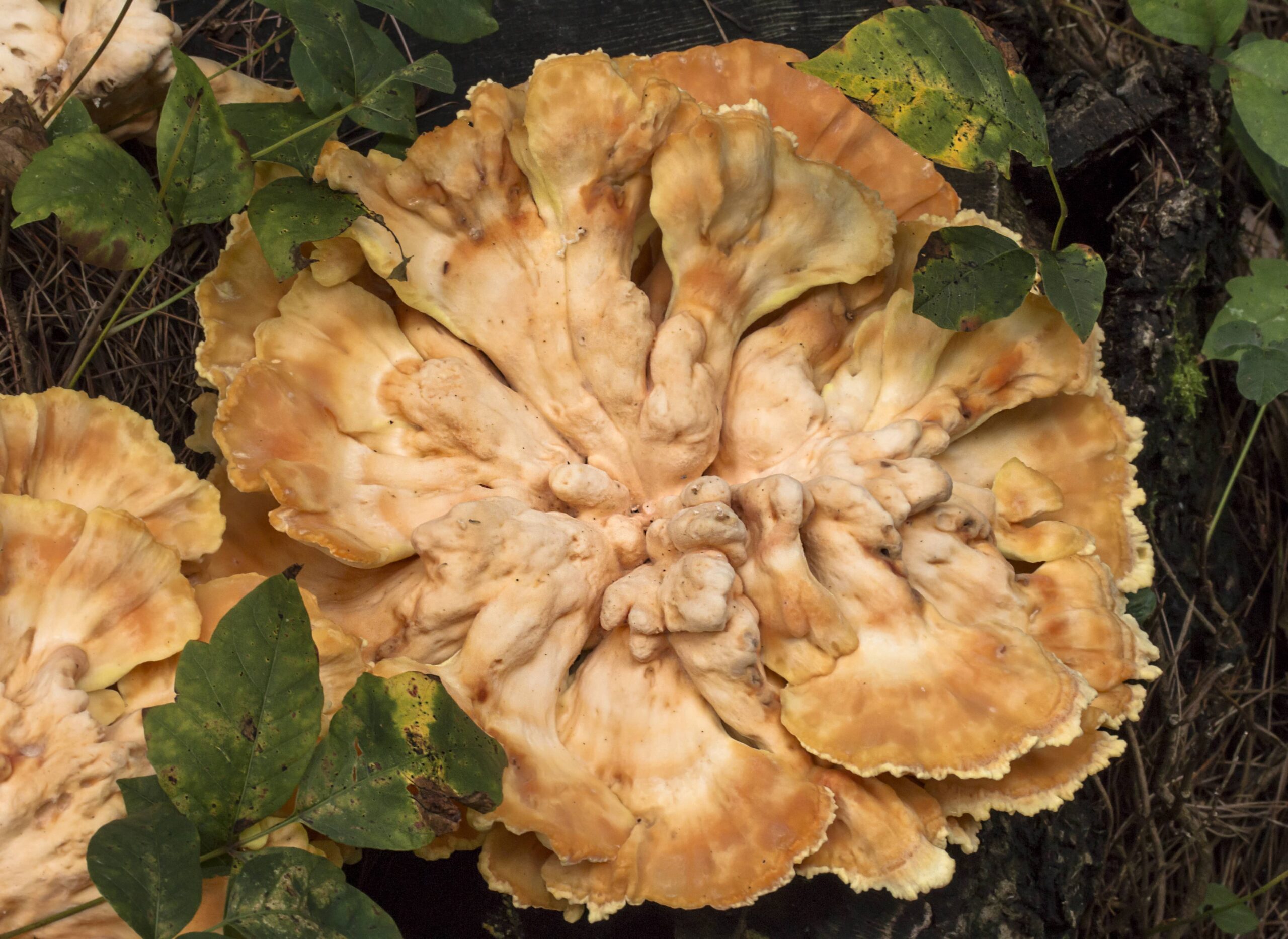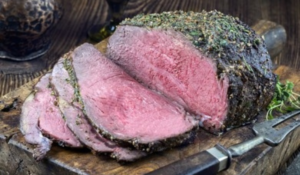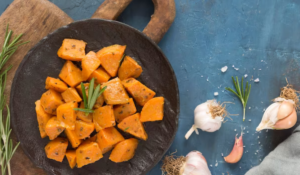Introduction to Chicken of the Woods
Chicken of the Woods, a vibrant and sought-after mushroom, offers a unique culinary experience. Known scientifically as Laetiporus, this fungus is not only a favorite among foragers but also a delightful ingredient in many vegetarian and vegan dishes. Its meat-like texture makes it an excellent substitute for chicken, inspiring a variety of creative Chicken of the Woods recipes.
In the culinary world, Chicken of the Woods stands out for its versatility and distinctive flavor. This mushroom is particularly renowned for its ability to absorb flavors, making it a versatile component in a range of dishes. For those interested in exploring its culinary uses, the New York Times Cooking section often features recipes and cooking tips for unique ingredients like Chicken of the Woods.
Selecting the Best Chicken of the Woods
Choosing the best Chicken of the Woods mushrooms is crucial for both safety and culinary quality. This distinctive fungus, known for its vibrant orange and yellow hues, grows on trees, but not all specimens are equal. Here’s how to ensure you pick the best ones for your dishes.
Identifying Quality Fungi
First, look for bright, vivid colors. Fresh Chicken of the Woods should have a soft, almost spongy texture. Avoid mushrooms that appear dry, brittle, or have a faded color, as these are likely past their prime. Also, steer clear of any specimens showing signs of mold or insect damage.
Where to Find Them
Chicken of the Woods typically grows on oak, cherry, and yew trees, among others. They are more commonly found on dead or dying trees, stumps, or logs. While foraging, focus on mature forests or wooded areas with a mix of these tree types. Remember, the health of the tree can affect the quality of the mushrooms.
Safety Tips Before Harvesting
Always positively identify the mushroom before harvesting. Chicken of the Woods is generally easy to identify, but there are look-alikes, such as the inedible or even toxic Sulphur Shelf. If you’re new to foraging, consider going with an experienced guide or consulting a reliable field guide.
Harvesting Techniques
When you find a good specimen, use a knife to gently cut the mushroom from the tree. It’s important to leave the base intact to allow for regrowth. Take only what you need, preserving the natural ecosystem and ensuring future harvests.
By following these tips, you can select the best Chicken of the Woods mushrooms, ensuring not only a delicious meal but also a safe and sustainable foraging experience.
Preparing Your Chicken of the Woods
Once you’ve selected the best Chicken of the Woods mushrooms, preparing them correctly is key to unlocking their full culinary potential. This unique fungus requires some special handling to ensure the best flavor and texture in your dishes.
Cleaning and Cutting Techniques
Start by gently brushing off any dirt or debris from the mushrooms. It’s best to avoid washing them under running water as they can absorb moisture and become soggy. If necessary, use a damp cloth to wipe the surface.
Next, cut the Chicken of the Woods into manageable pieces. Depending on your recipe, you might want to slice them into strips or cubes. The edges tend to be more tender, so you might want to separate them from the tougher, central parts of the mushroom. The tougher parts can still be used, but they may require longer cooking times to soften.
Safety Tips Before Cooking
While Chicken of the Woods is generally safe to eat, some people might have a sensitivity to it, especially when consuming it for the first time. It’s advisable to cook a small amount and try it to ensure you don’t have an adverse reaction.
Also, remember that the quality of the tree on which the mushroom grew can affect its edibility. Mushrooms from trees that have been treated with chemicals or are in polluted areas should be avoided.
Cooking Considerations
Chicken of the Woods has a meaty texture that holds up well to various cooking methods. However, it’s important to cook it thoroughly to break down its fibrous nature, making it more digestible and palatable. Sautéing, stewing, or grilling are excellent ways to cook this mushroom. You can also marinate it beforehand to infuse additional flavors.
By properly preparing your Chicken of the Woods, you’ll be ready to create a range of delicious, meat-free dishes that are sure to impress with their unique flavors and textures.
Classic Chicken of the Woods Recipe
A classic Chicken of the Woods recipe is a great way to showcase the unique flavors and textures of this remarkable mushroom. This simple yet delicious recipe will allow you to enjoy the natural taste of the mushroom, complemented by a few basic ingredients.
Ingredients
- Fresh Chicken of the Woods mushrooms, cleaned and cut into bite-sized pieces
- 2 tablespoons of olive oil
- 2 cloves of garlic, minced
- 1 small onion, finely chopped
- Salt and pepper, to taste
- A squeeze of fresh lemon juice
- Fresh herbs (such as parsley or thyme), for garnish
Step-by-Step Guide
- Prepare the Mushrooms: After cleaning and cutting the Chicken of the Woods into pieces, pat them dry to remove any excess moisture.
- Sauté the Aromatics: Heat the olive oil in a large skillet over medium heat. Add the minced garlic and chopped onion, sautéing until the onion becomes translucent and the garlic is fragrant.
- Cook the Mushrooms: Add the Chicken of the Woods pieces to the skillet. Sauté them until they start to turn golden brown, which usually takes about 5-7 minutes. The mushrooms should be tender but not mushy.
- Season the Dish: Season with salt and pepper to taste. Be mindful that the mushrooms can absorb the salt quickly, so it’s better to start with a small amount and adjust as needed.
- Add a Fresh Twist: Just before removing the skillet from the heat, add a squeeze of fresh lemon juice. This will brighten the flavors and add a slight tang to complement the earthy taste of the mushrooms.
- Garnish and Serve: Transfer the cooked mushrooms to a serving dish. Garnish with freshly chopped herbs for an added burst of flavor and a touch of color.
Serving Suggestions
This classic Chicken of the Woods recipe is incredibly versatile. Serve it as a main dish with a side of mashed potatoes or rice, or use it as a filling for tacos or wraps. It also makes a great addition to a hearty salad or a pasta dish.
Enjoy the natural, chicken-like texture and flavor of this delightful mushroom in a recipe that’s simple enough for a weeknight dinner yet elegant enough for a special occasion.
Creative Variations of the Chicken of the Woods Recipe
Chicken of the Woods mushrooms are not only delicious but also incredibly versatile, making them perfect for creative culinary experimentation. Here are some innovative variations of the classic recipe that can add an exciting twist to your meals.
Vegetarian and Vegan Adaptations
- Vegan Chicken of the Woods Stir-Fry: Use the mushrooms as a substitute for chicken in a colorful stir-fry. Combine them with a variety of vegetables like bell peppers, broccoli, and carrots. Use soy sauce, ginger, and garlic for a rich Asian-inspired flavor.
- Chicken of the Woods Fajitas: Marinate the mushroom slices in a blend of lime juice, cumin, paprika, and chili powder. Sauté with onions and bell peppers, and serve in warm tortillas with avocado and salsa for a Mexican-inspired feast.
Fusion Cuisine Inspirations
- Italian Chicken of the Woods Piccata: Cook the mushrooms in a lemon-butter-caper sauce, and serve over a bed of pasta or polenta. This dish combines the hearty texture of the mushrooms with the bright, tangy flavors of Italian cuisine.
- Indian Chicken of the Woods Curry: Simmer the mushrooms in a rich, spicy tomato and coconut milk-based curry. Serve with rice or naan bread for a warming, flavorful meal.
Comfort Food Reimagined
- Chicken of the Woods Pot Pie: Use the mushrooms as a filling for a vegetarian pot pie, mixed with peas, carrots, potatoes, and a creamy sauce, all encased in a flaky pastry crust.
- Barbecue Chicken of the Woods Sandwich: Grill or bake the mushrooms with barbecue sauce, then shred them. Serve on a bun with coleslaw for a vegetarian take on a classic BBQ pulled chicken sandwich.
These creative variations of the Chicken of the Woods recipe showcase the versatility of this unique mushroom. Whether you’re looking for a vegan alternative, a fusion dish, or a comforting classic, Chicken of the Woods can be the star ingredient in a myriad of delicious and inventive recipes.






